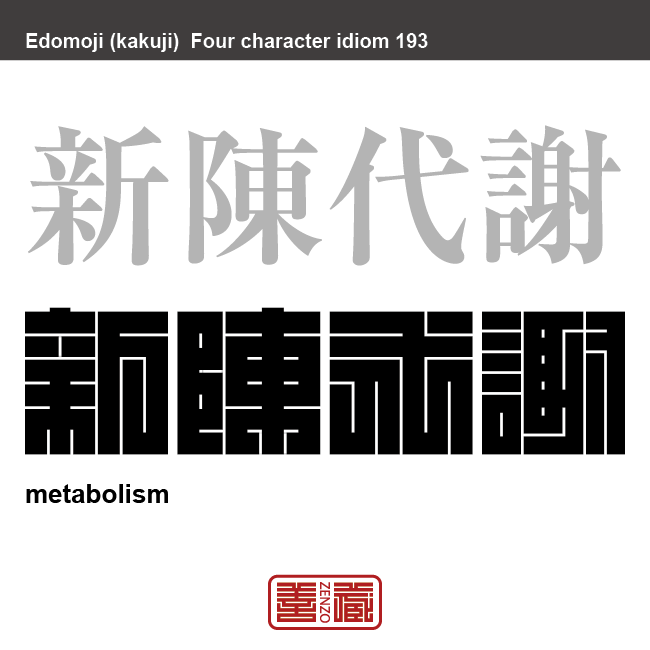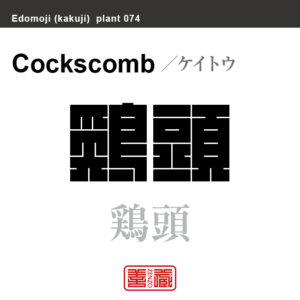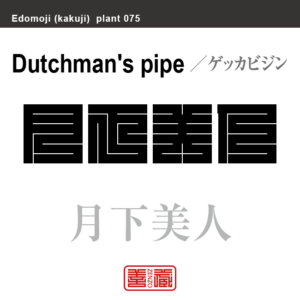新陳代謝 しんちんたいしゃ 角字でことわざ、四字熟語

新陳代謝
しんちんたいしゃ
Shinchin-Taisya
metabolism
Unicode: [新_0x65B0][陳_0x9673][代_0x4EE3][謝_0x8B1D]
古いものが、新しいものに入れ代わること。また、生物が生命持続のために、体内に必要なものを取り入れ、不必要なものを排出する作用のこと。
健康法や美容法においては、新しい髪が生えてきたり、古い皮膚が垢となって剥がれ落ちて新しい皮膚と入れ代わるなど、目に見えるところだけでなく、目に見えない筋肉や骨、血管や血液、細胞が新しく再生する事を指す。
角字とは?
江戸時代に誕生した角字は、正方形のグリッド内にほぼ水平・垂直のラインのみで文字(漢字)が表現されるグラフィックアートです。
正方形という限られた空間の中に、あらゆる文字を閉じ込めようとするグラフィックデザインは、前述した、ミニマムな物に対する日本人特有のこだわりが随所に感じられます。
そのシンプルで有りながら、奥深い「角字」は多くの日本人を魅了し、お祭りで着る半被や印半纏(しるしばんてん)と言われる着物や、商標、印鑑、家紋、看板デザインなどに今日まで数多く使用されてきました。
What is Kakuji?
There is a style of penmanship called “Kakuji” in Japan. Edo-born Kakuji is a graphicart that expresses letters (kanji) with almost horizontal and vertical lines only.
The design which bases on many straight lines seems simple, or too plain even at its first glance; yet this beautiful artistic penmanship that encompasses the aesthetic of the Japanese in the Edo era, also known as “Iki”, and playfulness has long been inherited to this day, thanks to the masteries’ long years of efforts in training and refinement.
Kakuji with its simplicity and depth is used for designs such as trademark, hanko stamp, family crest and signboard.































































 2文字コード:MZ 3文字コード:MOZ 数字:508 ITU:258 ccTLD:.mz
2文字コード:MZ 3文字コード:MOZ 数字:508 ITU:258 ccTLD:.mz







































































































































